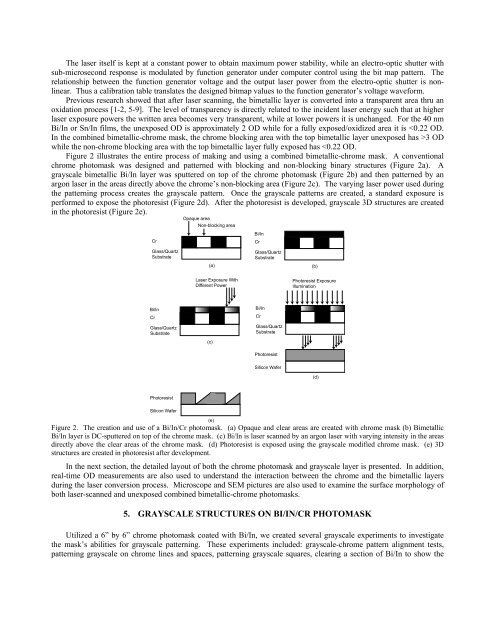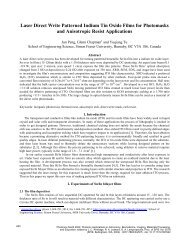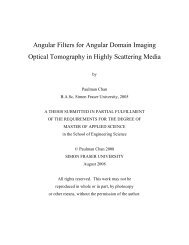Adding Grayscale Layer to Chrome Photomasks - Professor Glenn ...
Adding Grayscale Layer to Chrome Photomasks - Professor Glenn ...
Adding Grayscale Layer to Chrome Photomasks - Professor Glenn ...
You also want an ePaper? Increase the reach of your titles
YUMPU automatically turns print PDFs into web optimized ePapers that Google loves.
The laser itself is kept at a constant power <strong>to</strong> obtain maximum power stability, while an electro-optic shutter with<br />
sub-microsecond response is modulated by function genera<strong>to</strong>r under computer control using the bit map pattern. The<br />
relationship between the function genera<strong>to</strong>r voltage and the output laser power from the electro-optic shutter is nonlinear.<br />
Thus a calibration table translates the designed bitmap values <strong>to</strong> the function genera<strong>to</strong>r’s voltage waveform.<br />
Previous research showed that after laser scanning, the bimetallic layer is converted in<strong>to</strong> a transparent area thru an<br />
oxidation process [1-2, 5-9]. The level of transparency is directly related <strong>to</strong> the incident laser energy such that at higher<br />
laser exposure powers the written area becomes very transparent, while at lower powers it is unchanged. For the 40 nm<br />
Bi/In or Sn/In films, the unexposed OD is approximately 2 OD while for a fully exposed/oxidized area it is 3 OD<br />
while the non-chrome blocking area with the <strong>to</strong>p bimetallic layer fully exposed has










